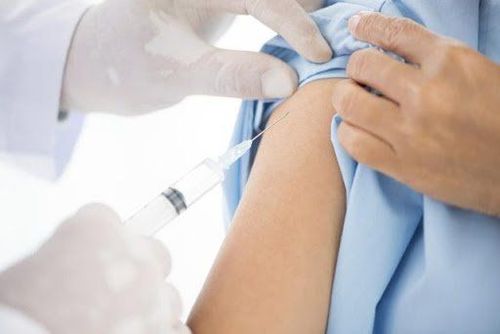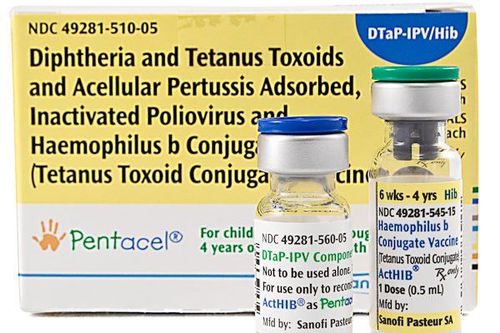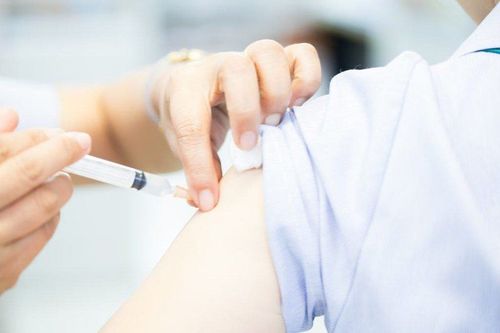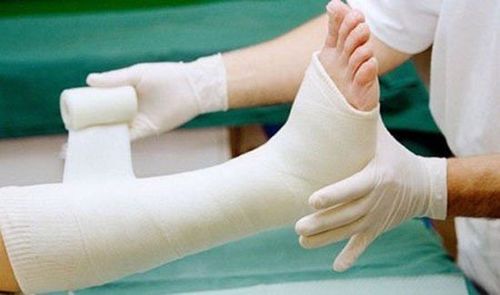This is an automatically translated article.
The article was written by Specialist Doctor II Pham Tien Ngoc - Emergency Resuscitation Department - Vinmec Central Park International General Hospital
The most effective preventive measure is to proactively vaccinate to create protective immunity before getting injured. There are 3 vaccination schedules for 3 groups of subjects: children under 5 years old, older children and adults, pregnant women.
1. Pathogens
Tetanus is caused by the bacterium Clostridium tetani, which is a gram-positive, anaerobic, saprophyte living in the intestines of humans and animals. The disease occurs due to poor hygiene conditions, germ cysts are everywhere: dirty soil contaminated with feces, but can be on furniture, sandy soil,...
Tetanus cysts enter the body through wounds Injuries to the skin, or mucous membranes,... Deep wounds, poorly perfused areas, wounds with foreign bodies, wounds caused by rusty nails... have a very high risk of infection. However, a small, clean wound can still be an opening to cause disease, the tetanus virus itself does not cause wound infection. In fact, about 10-30% of tetanus patients do not find an entrance.
2. Definitive diagnosis of tetanus
There are 4 forms of the disease: systemic tetanus, neonatal tetanus, local tetanus, and facial tetanus. Definitive diagnosis of tetanus is purely based on clinical symptoms, with the following signs:
Increased muscle tone (muscle spasticity) Spasms, convulsions, no disturbances in consciousness during convulsions No fever (except for tetanus) with superinfection or other associated infection) Tolerates high doses of sedation Not vaccinated against tetanus Has an open wound (in many cases, no bacterial entry is found)

Hình ảnh trẻ sơ sinh mắc bệnh uốn ván
Systemic tetanus: is the most common form, the typical case of the disease will progress through 4 stages as follows:
Incubation period: From the time the cyst enters the body (usually at the time of a wound in the body) in) until the first symptoms of the disease appear. The shorter this period, the more severe the prognosis, from 7-30 days. The onset of the disease: the typical symptom is a wrinkled smile due to jaw spasm and facial muscle stiffness causing the lips to open like a smile, narrow eye slits, deep grooves on the nose and cheeks... Full period: muscle stiffness whole body, convulsions, spasms, increased secretion of viscous sputum, vegetative nervous disorders, constipation, urinary retention,... Recovery period: stop convulsions, stop spasms, stay awake, stop breathing difficulty, .... Differential diagnosis
Limited jaw due to temporomandibular jointitis, infection at the angle of the jaw Extrapyramidal syndrome caused by drugs such as: Chlorpromazine, Metoclopramide,... Meningitis Hypocalcemia in infants born
3. Treatment of tetanus
3.1 Wound management Clean the wound immediately with hydrogen peroxide, remove foreign body, remove necrotic tissue, dirty wound in poor perfusion site such as (heel, instep, ...) Leave the skin open, take care of the wound until it heals. Dirty wounds are not sutured.
3.2 Antitoxin There are 2 types of antitoxin:
SAT : dose 1000 UI/kg for infants, 500 UI/kg for adults. SAT 1500 UI/ml product, usually 14 ampoules (21,000 UI) for intramuscular injection for adults (due to its large volume, it is divided into 2 different intramuscular injection sites).

Kháng độc tố SAT được sử dụng trong điều trị bệnh uốn ván
HTIG (Human tetanus Immuno Globulin) lasts for 2-3 months, the dose is 500-600UI intramuscularly. Antibiotics: usually use Penicilline (100,000 UI/kg) and Metronidazole (use 7-10 days, dose 500mg x 3-4 times/day) Anticonvulsants: Benzodiazepam, Midazolam, Phenobarbital,... Muscle relaxants: Pipecuronium or Vecuronium, reliever dose 0.05mg/kg, maintenance 0.02-0.05mg/kg/hour. Other problems: respiratory failure, timely tracheostomy, mechanical ventilation, treatment of temperature disorders, nutrition, water and electrolyte balance,...
4. Tetanus Vaccination
All people who have not been vaccinated against tetanus and who have not yet created protective antibodies are at risk of contracting the disease. In Vietnam, thanks to the tetanus vaccination program for women of childbearing age, to prevent neonatal tetanus, the rate of women getting tetanus is lower than that of men of the same age.
Please dial HOTLINE for more information or register for an appointment HERE. Download MyVinmec app to make appointments faster and to manage your bookings easily.













